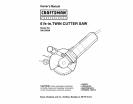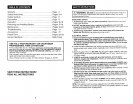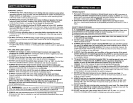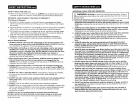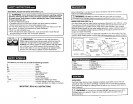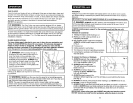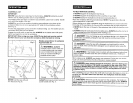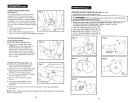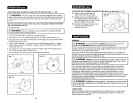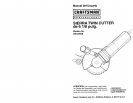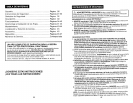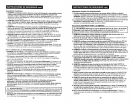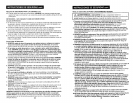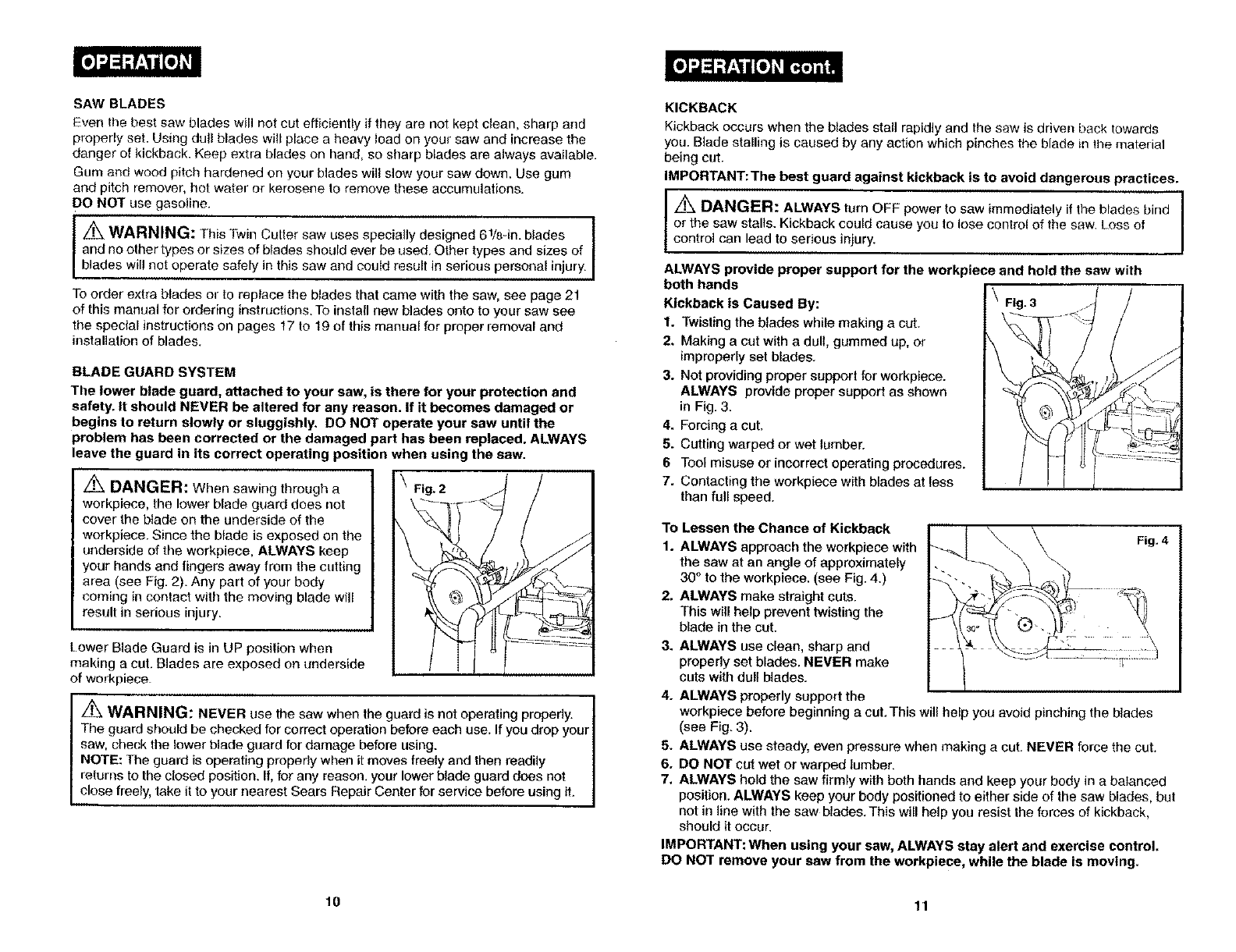
SAWBLADES
Even the best saw blades will not cut efficiently if they are not kept clean, sharp and
properly set. Using dull blades will place a heavy load on your saw and increase the
danger of kickback. Keep extra blades on hand, so sharp blades are always available.
Gum and wood pitch hardened on your blades will slow your saw down. Use gum
and pitch remover, hot water or kerosene to remove these accumulations.
DO NOT use gasoline.
z_ WARNING: This Twin Cutter saw uses specially designed 61/sqn. blades I
and no other types or sizes of blades should ever be used_Other types and sizes of
blades will not operate safely in this saw and cou d result in serious persona n ury.
To order extra blades or to replace the blades that came with the saw, see page 21
of this manual for ordering instructions. To install new blades onto to your saw see
the special instructions on pages 17 to 19 of this manual for proper removal and
installation of blades.
BLADE GUARD SYSTEM
The lower blade guard, attached to your saw, is there for your protection and
safety. It should NEVER be altered for any reason. If it becomes damaged or
begins to return slowly or sluggishly. DO NOT operate your saw until the
problem has been corrected or the damaged part has been replaced. ALWAYS
leave the guard in its correct operating position when using the saw.
Z_ DANGER: When sawing through a \ Fig. 2
workpiece, the lower blade guard does aot
cover the blade on the underside of the
workpiece. Since the blade is exposed on the
underside of the workpiece, ALWAYS keep
your hands and fingers away from the cutting
area (see Fig. 2). Any part of your body
coming in contact with the moving blade will
result in serious injury.
I ower Blade Guard is in UP position when
making a cut. Blades are exposed on underside
of workpiece
Z_ WARNING: NEVER use the saw when the guard is not operating properly.
The guard should be checked for correct operation before each use. Ifyou drop your
saw, check the lower blade guard for damage before using.
NOTE: The guard is operating properly when it moves freely and then readily
returns to the closed position. If, for any reason, your lower blade guard does not
close freely, take it to your nearest Sears Repair Center for service before using it.
KICKBACK
Kickback occurs when the blades stall rapidly and the saw is driven back towards
you. Blade stalling is caused by any action which pinches the blade in the material
being cut.
IMPORTANT: The best guard against kickback is to avoid dangerous practices.
z_ DANGER: ALWAYS turn OFF power to saw immediately if the blades bind J
or the saw stalls. Kickback could cause you to lose control of the saw. Loss of
I
control can ead to serious njury.
ALWAYS provide proper support for the workpiece and hold the saw with
both hands
Kickback is Caused By:
1. Twistingthe blades while making a cut.
2. Making a cut with a dull, gummed up, or
improperly set blades.
3. Not providing proper support for workpiece.
ALWAYS provide proper support as shown
in Fig. 3.
4. Forcing a cut.
5. Cutting warped or wet lumber.
6 Tool misuse or incorrect operating procedures.
7. Contacting the werkpiece with blades at less
than full speed.
To Lessen the Chance of Kickback
1. ALWAYS approach the workpiece with
the saw at an angle of approximately
30° to the workpiece. (see Fig, 4,)
2. ALWAYS make straight cuts,
This will help prevent twisting the
blade in the cut.
3. ALWAYS use clean, sharp and
properly set blades. NEVER make
cuts with dull blades.
4. ALWAYS properly support the
workpiece before beginning a cut. This will help you avoid pinching the blades
(see Fig. 3),
5. ALWAYS use steady, even pressure when making a cut. NEVER force the cut.
6. DO NOT cat wet or warped lumber.
7. ALWAYS hold the saw firmly with both hands and keep your body in a balanced
position. ALWAYS keep your body positioned to either side of the saw blades, but
not in line with the saw blades.This will help you resist the forces of kickback,
should it occur.
IMPORTANT: When using your saw, ALWAYS stay alert and exercise control,
DO NOT remove your saw from the workpiece, while the blade is moving,
10 11



